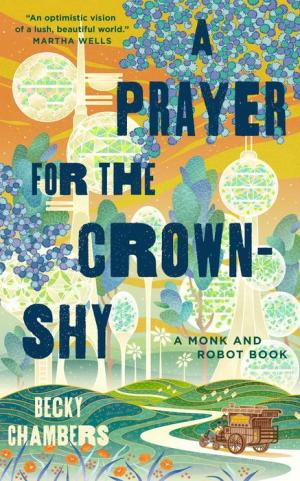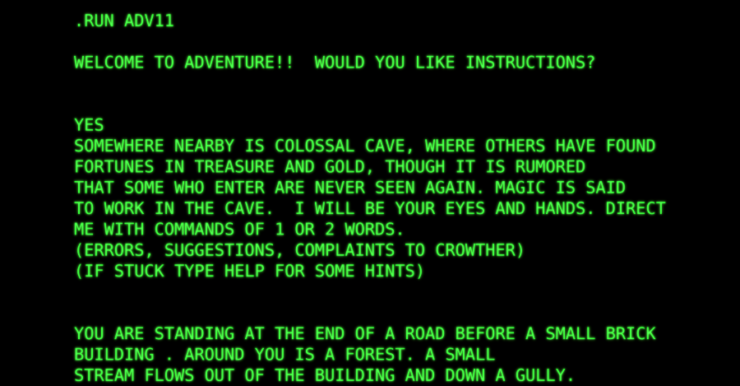It’s the understatement of the century to say that COVID-19 has led to irrevocable changes in our global society. In events, in the economy, and in culture. For the science fiction and fantasy community, one of the most visible changes was when the Hugo Awards took the form of an online ceremony for the first time in 2020.
Yet, somewhat ironically, it was in 2021, with the Hugo Awards eschewing the virtual world and returning to an in-person ceremony, that they decided to issue a special honour: an award for Best Video Game.
“For many, video games are the main way to experience science fiction and fantasy storytelling,” said co-host Andrea Hairston. “Expansive series like Mass Effect, Horizon Zero Dawn, and Final Fantasy have shown that games are now more than play. They’re lived-in spaces where players are free to explore new worlds, new stories, and new identities.”
It’s certainly true that in a stunningly short period of time, evolutions in technology have evolved so quickly that people who were coding some of the earliest programs are still alive today, experiencing virtual reality, wholly interactive experiences, and far more in-depth stories than were possible when they started their careers.
But while Hairston and co-host Sheree Renée Thomas did acknowledge the long history of video games by mentioning Bertie the Brain, a Canadian-made machine built in 1950 that could play tic-tac-toe, it’s important to also acknowledge that the line between literary science fiction and fantasy and the virtual world has been blurred almost for as long as the medium of gaming has been publicly available.
The earliest games were made and played on machines that were largely inaccessible to the general public, like MIT’s Spacewar!, which was built on the university’s PDP-1 minicomputer (a misnomer if there ever was one—the “minicomputer” weighed 730 kilograms). They were also the purview of the minuscule hacker and programmer community, which again, proliferated in universities but was as scarce as the dodo bird elsewhere. However, while arguably “SF&F” in style, these were not mediums for storytelling.
It was only in the ’70s—when gaming became commercially viable with the advent of personal computers and home consoles, along with the introduction of accessible programming languages like BASIC—that gaming suddenly became a place for telling tales.
In 1972, programmer William Crowther was working at Bolt, Beranek & Newman in Boston, alongside his wife Pat. Crowther was an avid cave surveyor, and used his skills with programming to send survey data remotely to a teletype in his living room. When his marriage to Pat ended in 1975, William, feeling estranged from his two daughters, decided to write a game that would simulate his caving experiences, which he hoped would bring him closer to his children.
Crowther’s daughters would be introduced to the world of Colossal Cave Adventure, widely recognized as the first text-based adventure game. It was through the efforts of another programmer, Don Woods, who found the game on a university computer at Stanford, that Colossal Cave Adventure was then widely distributed for the public, with Crowther’s blessing.
Two big fans of the game were MIT students Marc Blank and Dave Lebling. Lebling was also a tabletop gamer and huge fan of Dungeons and Dragons, so much so that he built a program to aid him in playing the iconic fantasy RPG.
Lebling and Blank, as well as fellow MIT students Tim Anderson and Bruce Daniels, inspired by Colossal Cave Adventure, set about making one of the first fantasy adventure video games: Zork, first released in the university community in 1979. Meanwhile, in the literary world, books were also becoming more interactive, both with Dungeons & Dragons and with the 1976 release of the first Choose Your Own Adventure book.
Thus, Interactive Fiction was born.
In these seminal steps, the blurring between video games and literary science fiction and fantasy was established from the get-go. Infocom, the studio founded by Lebling, Blank, Anderson, and several other co-founders, was particularly known for pushing the idea that fiction could be something audiences interacted with.
Titles like A Mind Forever Voyaging and Planetfall were embraced as superb science fiction yarns, The company would even issue novelizations of its games, including the 1989 adaptations of Enchanter (first released as a game 1983) and Stationfall (first released as a game in 1987), the sequel to Planetfall.
Infocom is famously known as the studio that somehow managed to make a video game based on the already-adapted Hitchhiker’s Guide to the Galaxy, the radio play-cum-novel-cum-TV series-cum everything. The adaptation of literary science fiction to video games would reverberate well into the ’90s, with cult classics like Cyberdreams and The Dreamers Guild’s adaptation of Harlan Ellison’s I Have No Mouth, and I Must Scream or Psygnosis’ Discworld game, which borrows mainly from Pratchett’s Guards! Guards!
The interest was not one-sided, either. Foundational works in literary science fiction and fantasy like Neuromancer and Snow Crash had gaming and programming in their blood. These novels recognized the inexorable cultural pull of technology, and foresaw a future where the virtual world would, in many ways, overtake the real one. Other stories like Larry Niven’s Dream Park offered a look into the potential future of e-sports or gaming competitions. Technology was hurtling forward, and gaming was a core component, helping to drive that momentum.
Buy the Book


A Prayer for the Crown-Shy
Evolutions in technology meant that, oddly enough, the mediums were separating again, in a sense, moving from the text-based work of Infocom to point-and-click output of studios like LucasArts. It is this separation which may, ironically enough, be why video games haven’t been taken seriously as a storytelling medium, broadly speaking, until more recent years.
Yet even in the apparent branching off of video games into their own unique kind of storytelling, the core foundation remained the same. Players may have interacted by clicking instead of typing, and by watching characters talk instead of reading, but story and worldbuilding were central to gaming. Programmers would be crafting narratives, and the foundational programming language of “use—object—on—interactable” still existed in the background of code.
Indeed, the literary aspects never really left. One need only look at works like 1999’s Planescape: Torment, which was jokingly referred to by gamers as “the best novel you’ll ever play” and by Macworld as “A text-driven masterpiece,” to see how literary sci-fi and video games were always running alongside each other. Planescape: Torment is estimated to contain around 800,000 words in its script—a word count which one writer aptly observed is 30 percent longer than War and Peace.
Even today, some games persist with mainly text-driven stories and playstyles, like the award-winning 2019 game Disco Elysium, developed and published by ZA/UM with Estonian novelist Robert Kurvitz as the core narrative writer and designer. It is a testament to the power of its writing that Disco Elysium is the highest-rated PC game on review-aggregate website Metacritic.
All of this is to say that it is a thrill to see that video games are finally getting their due credit in the cultural discourse. While the Hugo Award for Best Video Game was ostensibly a one-off, the rumour mill has it that it could become a permanent fixture.
If anything, the history of gaming and its significant overlaps with literary science fiction and fantasy prove that this recognition has been a long time coming. This is a medium which, more than anything, was founded in a spirit of empathy—that of a father hoping to reach out to his daughters and create a world, and a story, in which they could all take part. Indeed, storytelling is fundamentally about empathy—a way of engaging a reader’s emotions through themes and characters, pushing that reader to a place of understanding and connection. This drive toward connection and empathy has been a part of video games since their very inception, and it’s time that we recognize and celebrate video games as a storytelling art form in their own right.
These are the stories that shape us. These are the stories we played, and shared with others, and which continue to shape the imaginations of future readers, writers, gamers, and artists.
Tim Ford is a writer and freelance journalist based in Victoria, Canada. He has had bylines with CBC News, the Toronto Star and the National Observer, and SF&F stories with Neo-Opsis Magazine, Crossed Genres Magazine and EDGE Science Fiction and Fantasy. He also has a pitbull-corgi cross and can be found @TimFordWrites on Instagram and Twitter.










